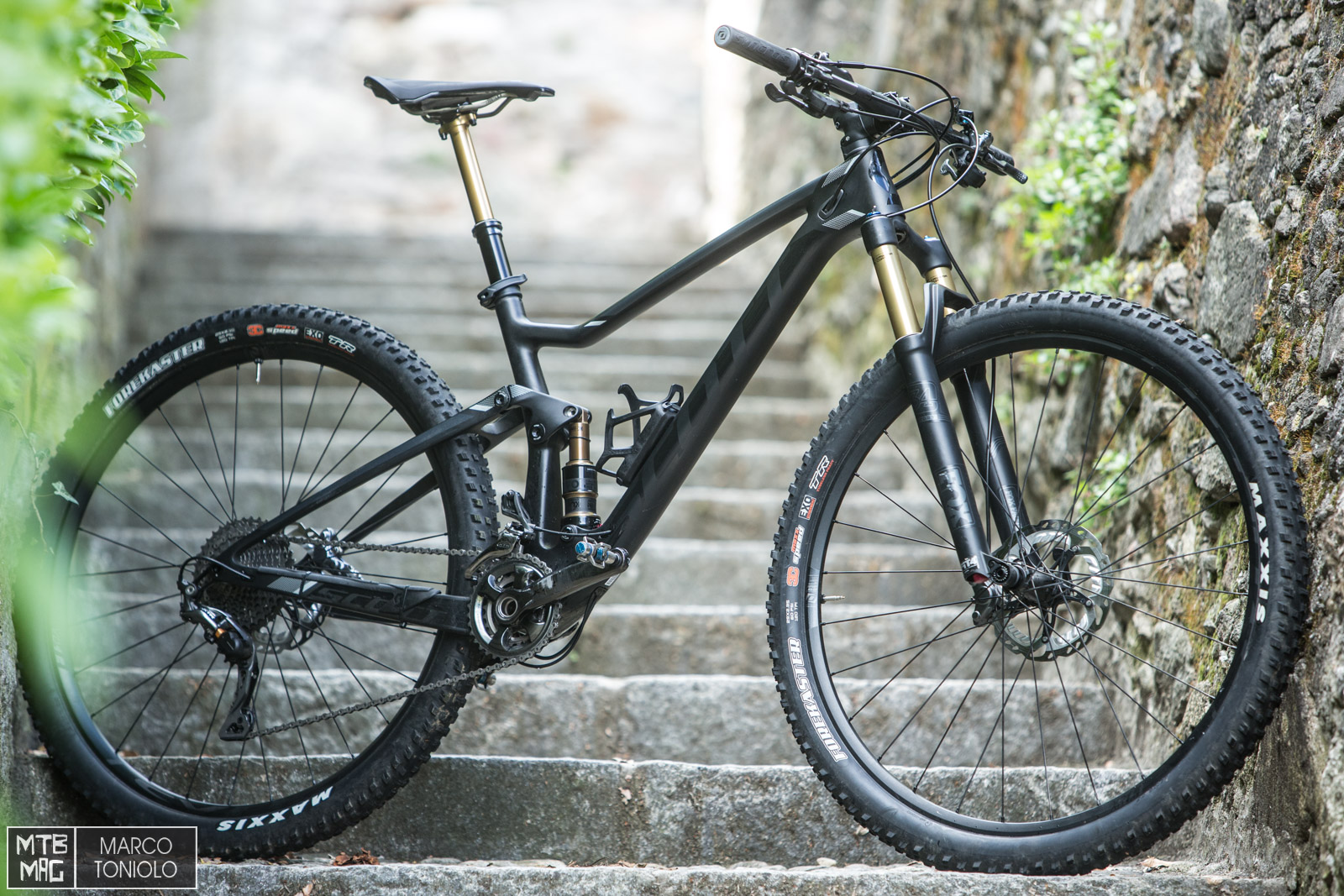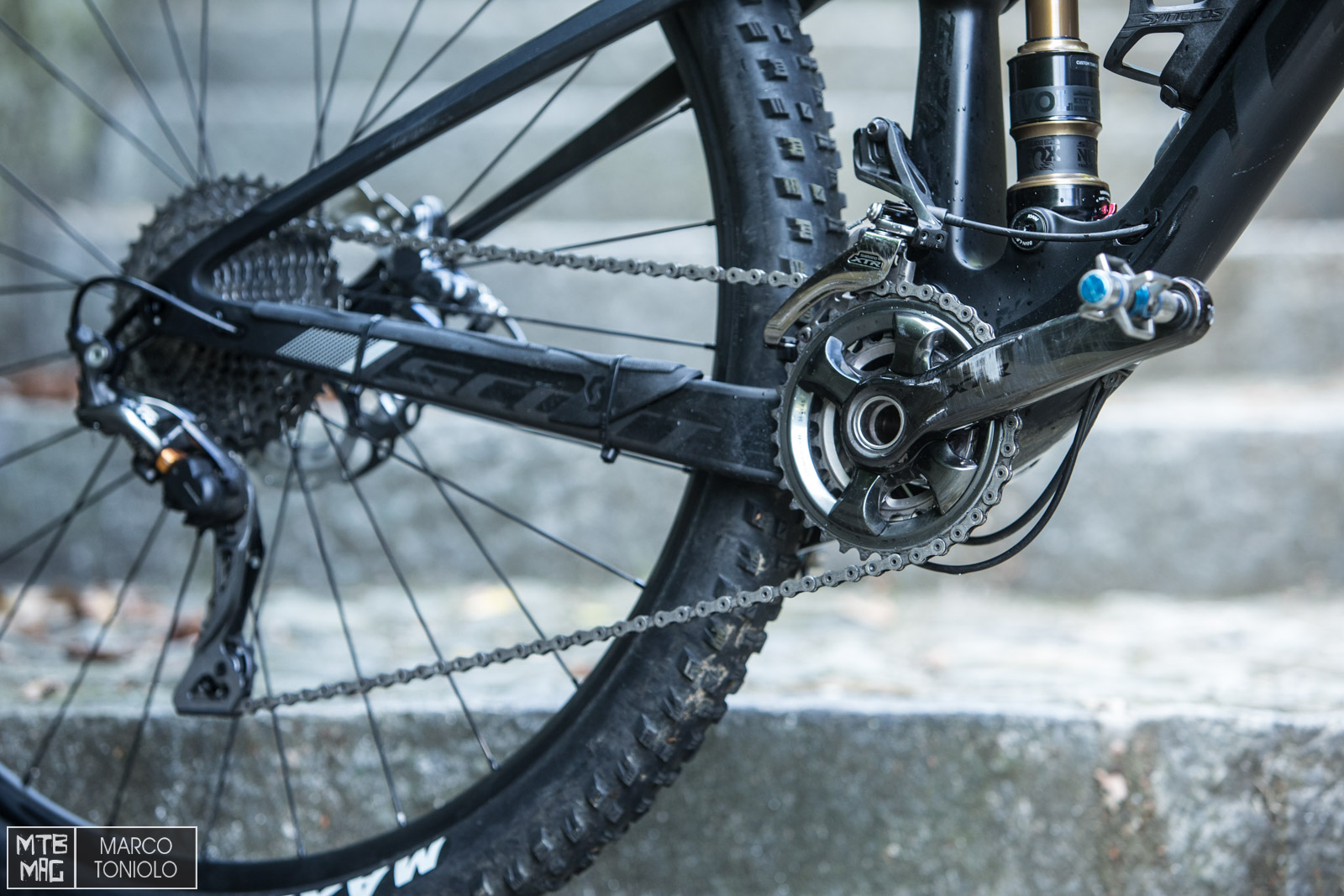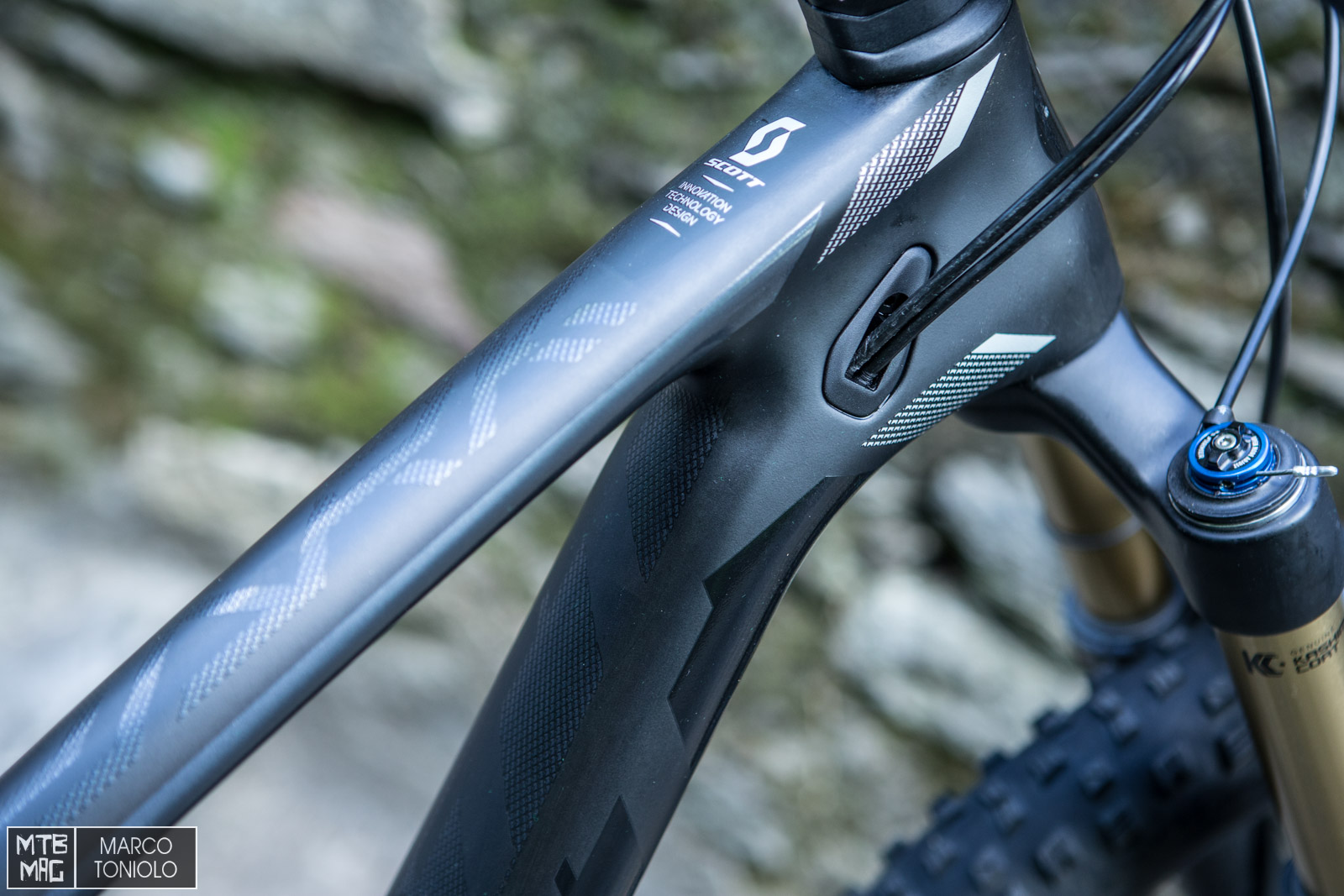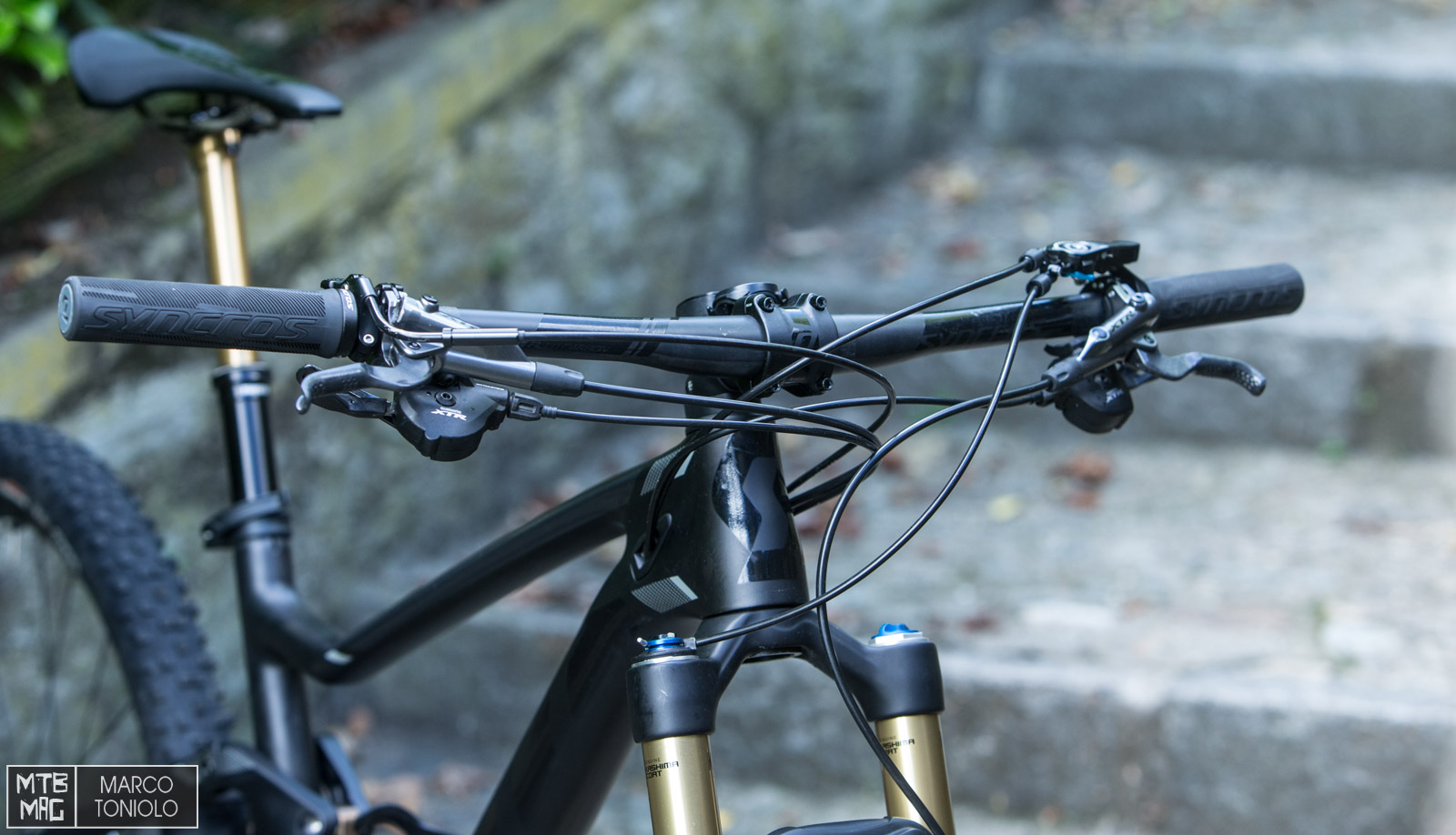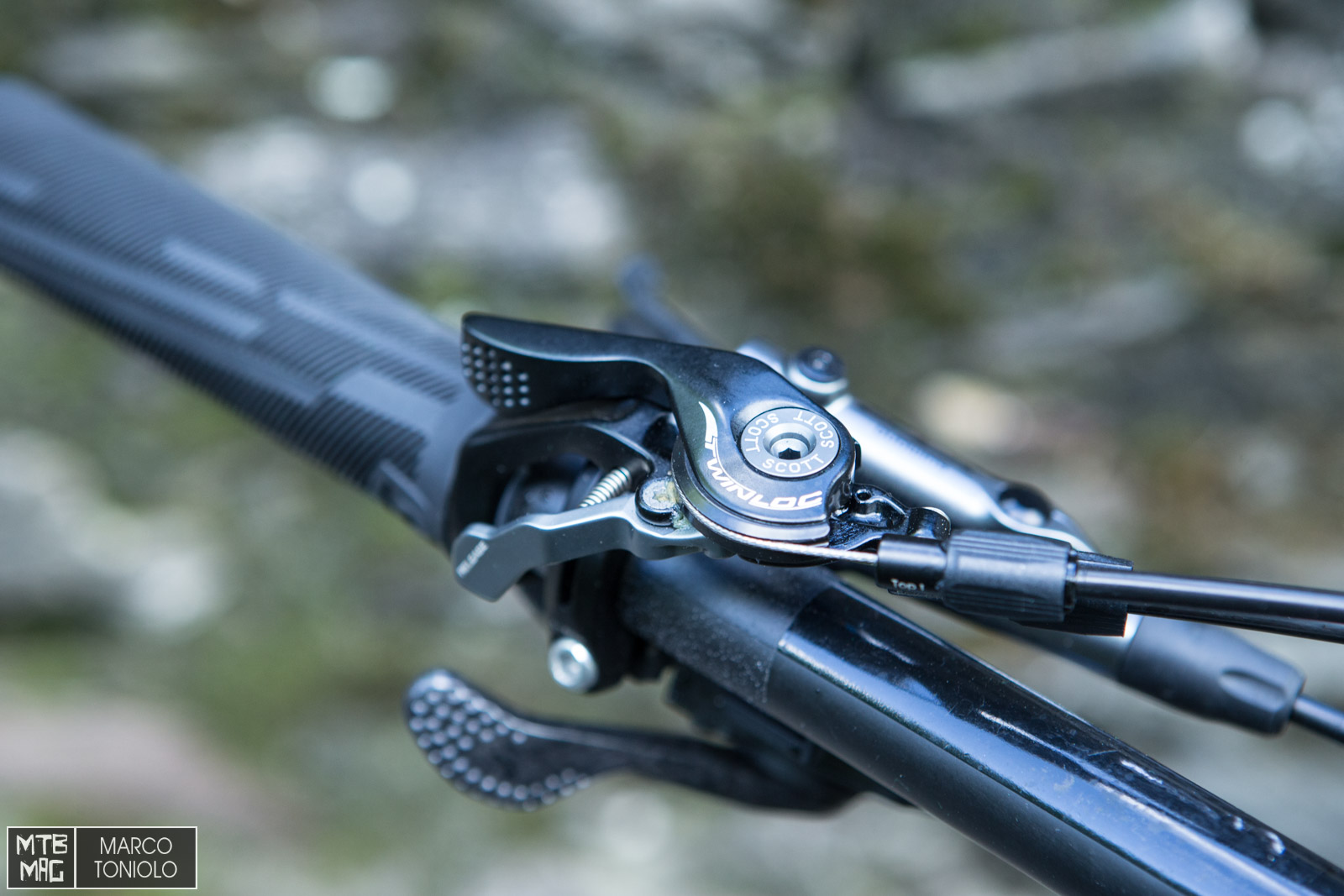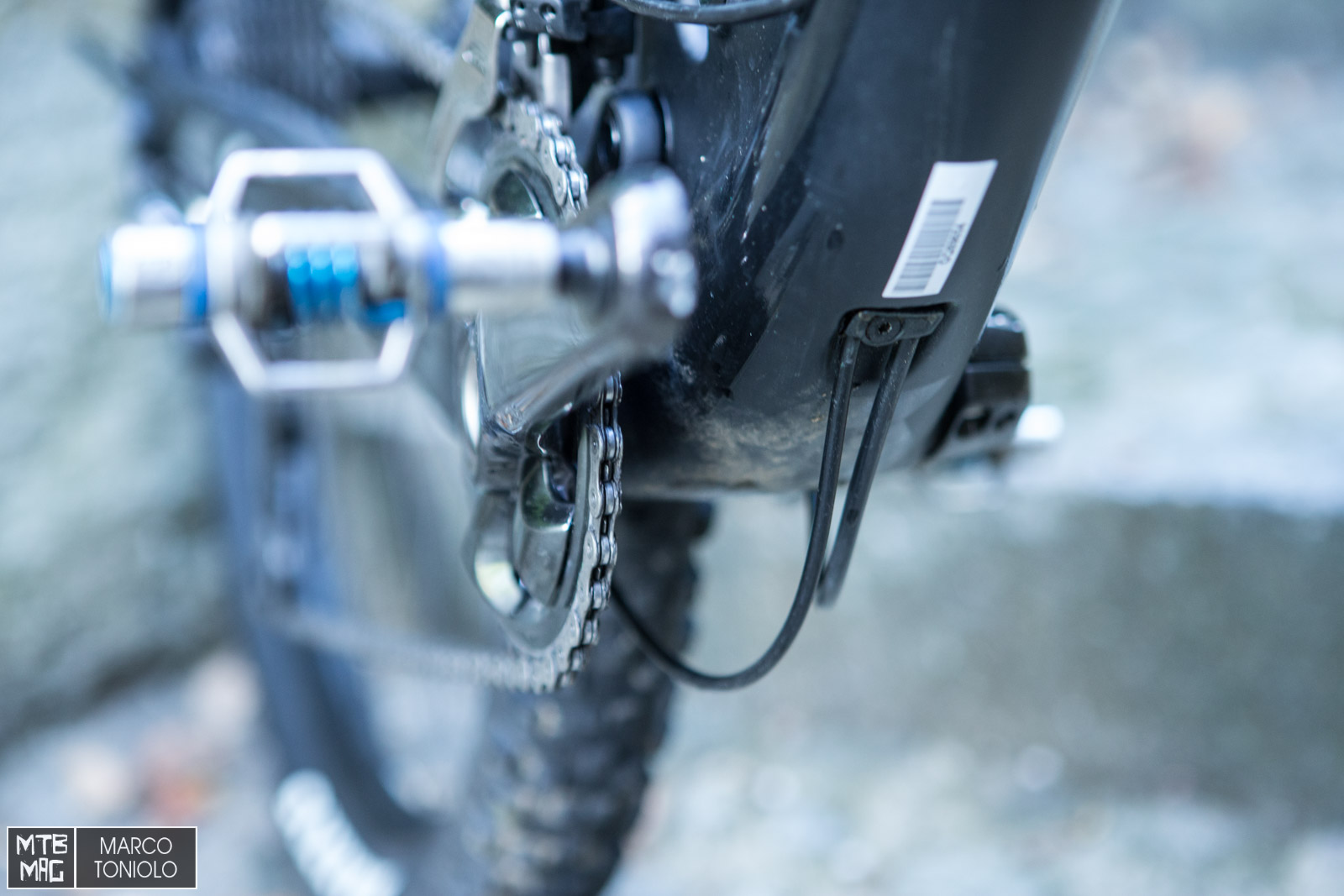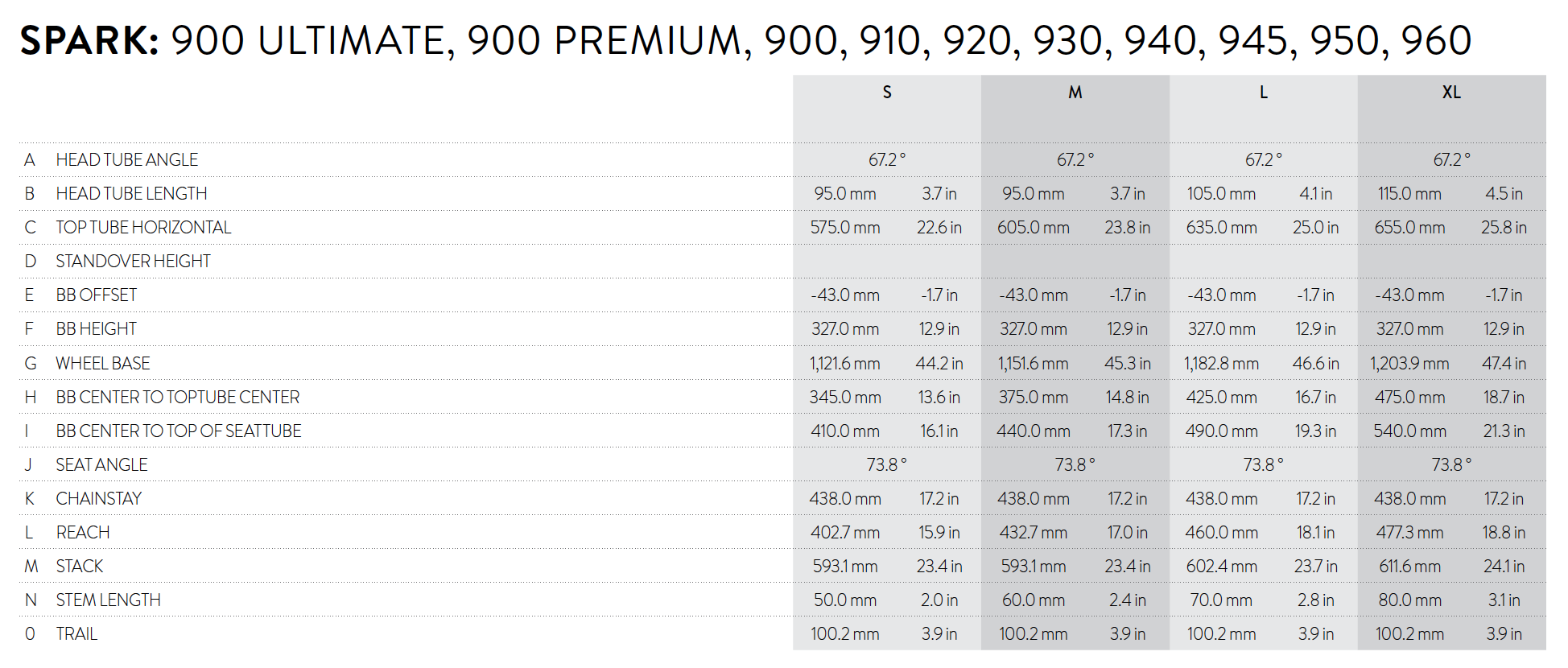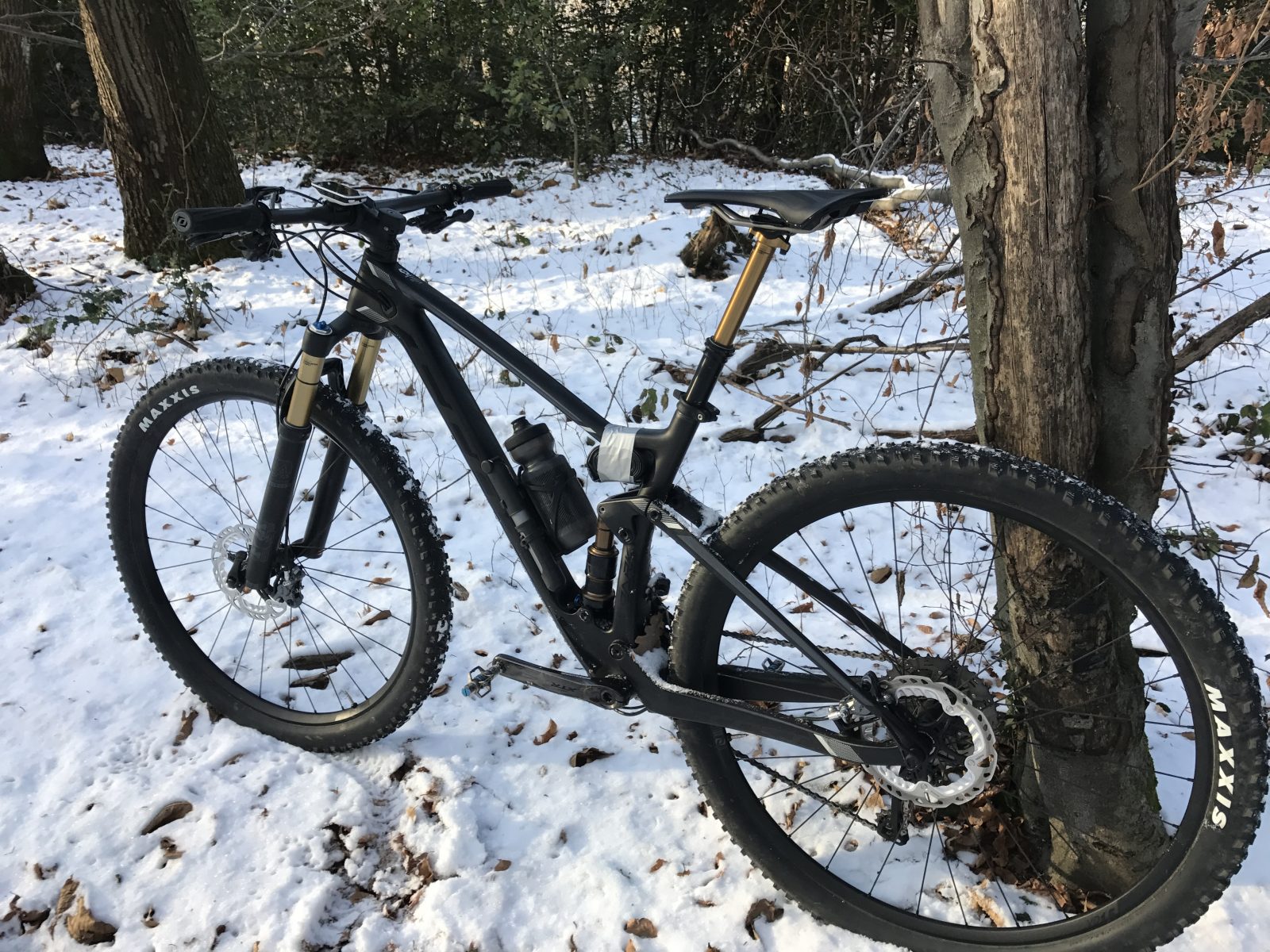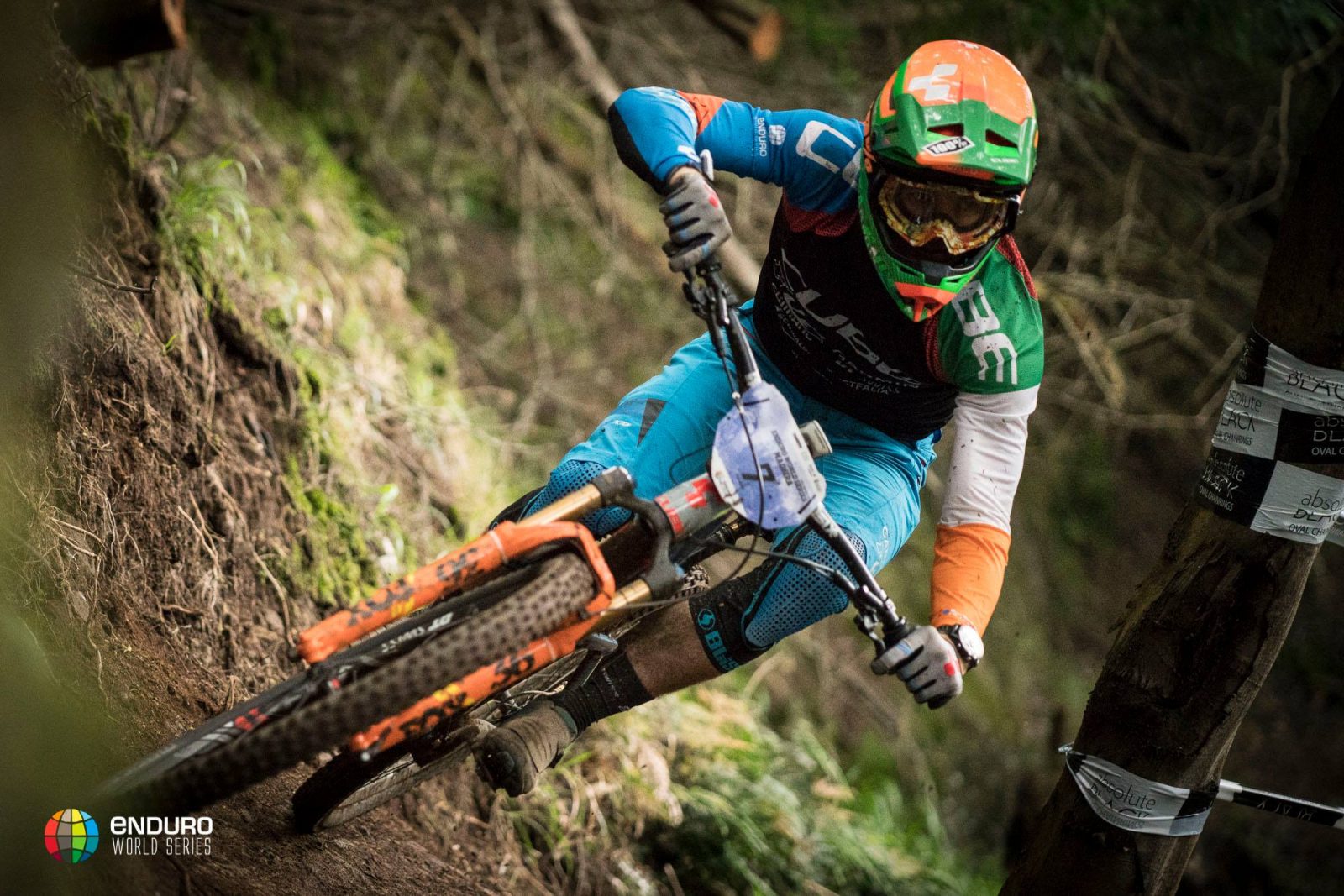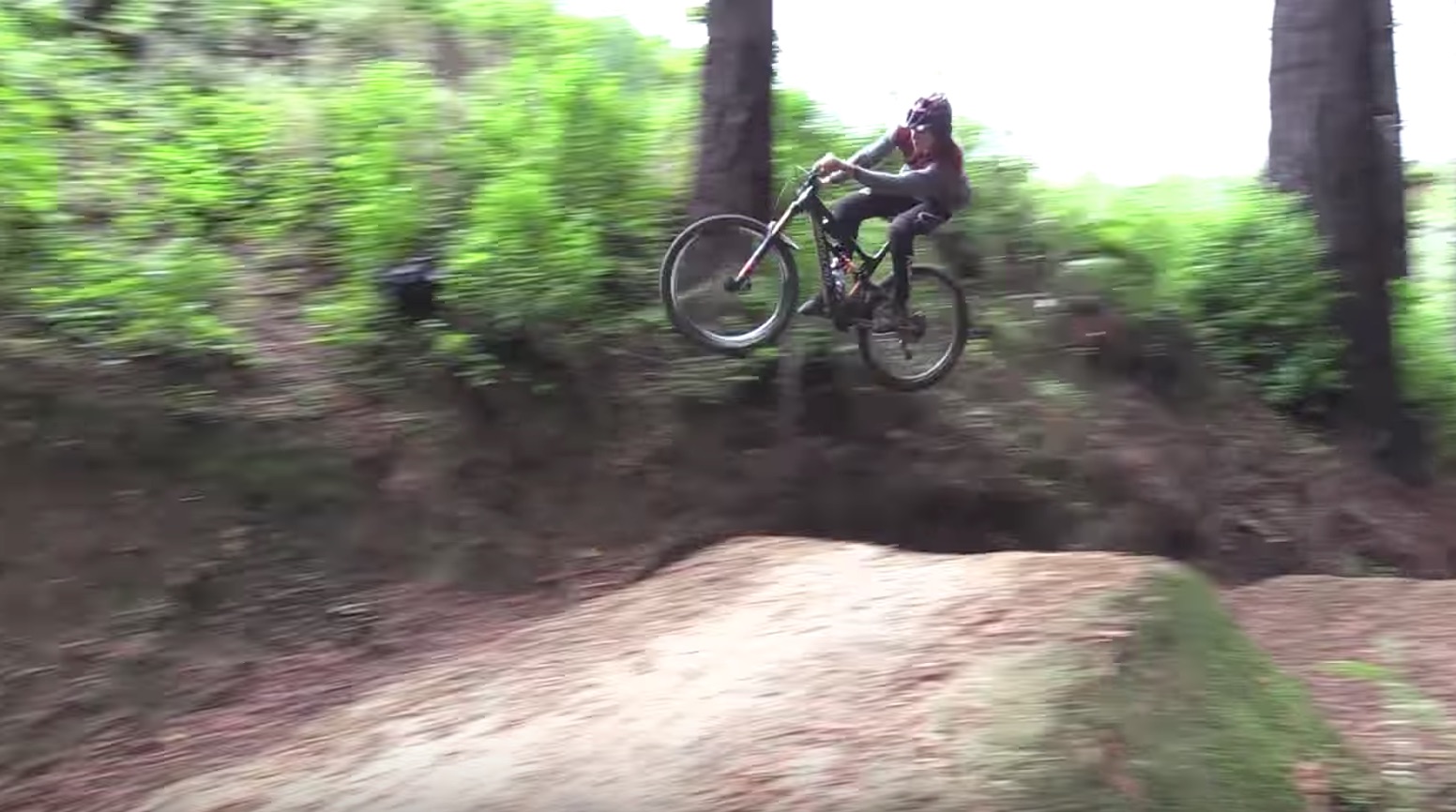[ad3]
Scott completely redesigned the Spark and launched it last summer. After a short test of the Plus version, now it’s time for our review of the 29er with 120mm of front and rear travel. The Premium model is entirely equipped with mechanical Shimano XTR.
Scott Spark 900 Premium highlights
Frame: full carbon
Wheels format: 29”
Adjustable geometry: no
Rear/front travel: 120/120 mm
Compatibility with 650+ format: no
Rear Boost: yes
Fork Boost: yes
Metric shock: yes (165mm of interaxis and 45mm of travel)
Tubeless ready rims and tires: yes
Transmission: 12×11 (front 34×24, 11-40 cassette)
Derailleur mount: yes
Bottle cage mount: yes
Available colors: black
Frameset only: not available
Measured weight: 11.650 kg
Price: 7,899 Euro
Static Analysis
Scott offers 24 models of the Spark, divided amongst 27.5 and 29ers (4 of which are specific for women), there are 9 RC models, with just 100mm of front and rear travel, designed for competitions, and 6 Spark Plus models, considered by the Swiss brand as Trail models. The Spark 900 Premium is the second highest spec’ed model of the line with 120mm of travel, hence the price. Keep in mind that there are builds for every pocket.
The HMX full carbon frame is extremely well finished and painted, decals included. The all-black version is very appealing and the shapes don’t go unnoticed.
In 2017 Scott has improved the kinematics to solve some previous models’ issues such as low initial travel sensitivity and low support from the suspension from mid to full travel. The average leverage ratio is 2.5, it is higher at the beginning of the travel and gets lower and lower, in this way the suspension is more sensitive to small bumps and provides more support afterwards. The suspension scheme is still a single pivot with a rate modifying linkage.
The shock is the Fox Nude, which allows for reduced air chamber volume via the Twin Lock remote (which simultaneously controls the fork). In traction mode the volume is almost reduced in half. The shock length has changed since Scott switched to metric shocks; it is now 165mm long with 45mm of travel. It is well sheathed in the down tube where it is protected from the dirt thrown by the rear wheel. This way the mud has little surface to stick to, and you don’t have to carry extra weight around during wet races. One peculiar thing is the 6mm offset shock (and link) position, which allowed to keep carbon fibers straight, making the structure more solid.
Speaking of the Twinlock, Scott’s flagship system, it is on the left side of the handlebar which is pretty crowded: 7 cables is the price to pay if you want a double chainring drivetrain and a dropper post, a Fox Transfer with 125mm of travel (here is our test). The Twinlock controls the fork and shock compression at the same time, with three positions: open, traction and locked.
Dealing with cables, they pass through the down tube, come out under the bottom bracket, go into the stays and exit in their rear side.
Aluminum wheels (26mm of width), stem, handlebar (740mm), saddle and bottle cage with tool bag are all made by Syncros, which was acquired by Scott some years ago. The rims are made of aluminum while the bar is made of carbon. An interesting feature is the bottle cage with portable multitool.
The group is a Shimano XTR, brakes included, which have two 180mm rotors. The tires are two tubeless 2.35” Maxxis Forekaster with latex.
Geometry
On the trail
The Scott Spark places itself between the racing and trail segment. It has too much travel to be a full race bike, solid tires instead of the usual superlight paper-like tires installed by the companies to save weight, and a dropper post, the nightmare (or dream, tastes are not disputable) of every XC racer. The target audience are those riders who don’t ride extreme trails but like bikes which are light and comfortable to pedal on climbs. Not by chance do we find the double chainring, with a very “soft” gearing: 34-24 chainrings are made to climb up anything and to spin like a madman on flat ground or downhill.
Climbing
Twinlock locked, ready, go! If you start and maybe also climb on asphalt, the “Scott method” is one of the most, if not the most, effective since it is fast, easy and well thought out. Complete suspension lock out may sound common but it helps a lot on long and flowy climbs, both on asphalt or off-road. You can save a lot of energy and every stroke provides traction. In traction mode, Fox Nude volume reduction is all but ordinary. The sag is reduced, the head angle doesn’t get too slack and the shock sensitivity allows it to soak up sections of rough ground nicely. All in all the Spark is a climbing rocket: thanks to its balanced geometry with a long reach (432mm on the tested M size), a short rear triangle and a suitable head angle (67.2°), the bike is agile on technical and curvy sections.
The front is well glued to the ground and it doesn’t require any particular weight shifting. The tires provide good grip on any kind of terrain without excelling on one specific surface.
The main problem during the test was the time needed to get used to all the remotes on the bar, especially on up and down trails where you constantly have to shift gears and adjust the dropper post. When you have to make a quick decision, it is very easy to pull the wrong lever, in particular the dropper post one, placed on the right instead of the left side, common when riding the single chainring. It is not an impossible task, of course, but we wouldn’t have chosen the double chainring, just to make it easier, also considering the fact that we ended up using the 34 chainring almost exclusively, apart from very few exceptions.
With the suspension open, you notice the classic single chainring bobbing, that is why we always set the traction mode riding off-road, except when riding downhill.
Downhill
Kinematics changes are clearly noticeable once you point this bike downhill. We’re dealing with a modern rear suspension, with early travel sensitivity and late travel progression. This is well suited to the Fox 34 which has the same characteristics. The Fox Nude with DPS works very well and it is not affected by overheating on long descents despite its small dimensions. The Spark 29, with only 120mm of travel, conveyed good confidence on our usual test trails: it is not as fast as a trailbike with more travel, but still faster than an XC. The combination of capable tires, sensitive suspension plus a powerful and consistent braking system makes the rider feel perfectly safe.
The Spark gives its best on narrow sections, considering its agility on corners, especially the tight ones. As for the Stoll T1, we can say the same things: moderate angles and short travel are not that bad to ride mountain trails which are not specially built for bikes. The disadvantage on fast and rough ground is not that big; if you buy a bike with 120mm of travel you don’t want to race downhill, but to be able to ride down everywhere (or at least try to) in total safety. As already stated, safety is provided by the 29” wheels and the suspension system.
The stiff frame plays an important role in the overall behavior of the bike which is fun to ride pumping it on corners and obstacles. In comparison with the Plus model at 130mm of rear and front travel, a more aggressive set of tires and wider rims (video above), we must say that with the 900 Premium you can easily take it to the limit if you let it flow. We feel comfortable in recommending the Spark Plus to aggressive riders who also more safety. The other side of the coin is the bigger effort required uphill.
Conclusions
The Scott Spark did not solely change its look: thanks to modern geometry and effective suspension it is now a “light trail bike” whose fans will be those who like pedaling a lot while also enjoying difficult terrain. The Premium model build is equipped with the double chainring and the dropper post: therefore, the bar is not user friendly since it is packed with remotes, especially when combined with the Twin Lock. If possible, you should opt for the single chainring.

